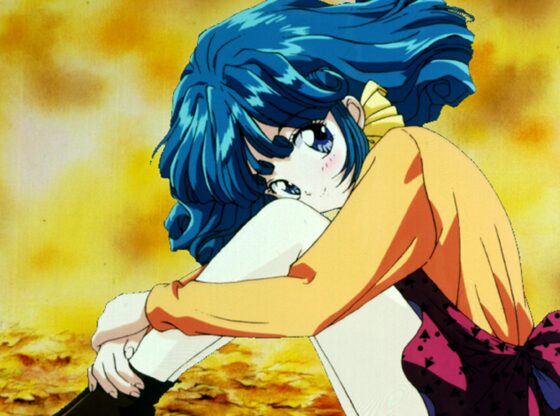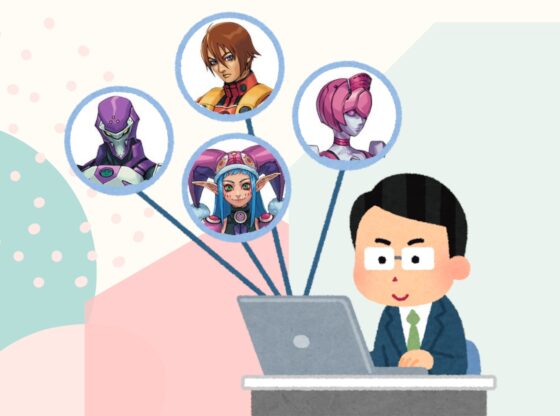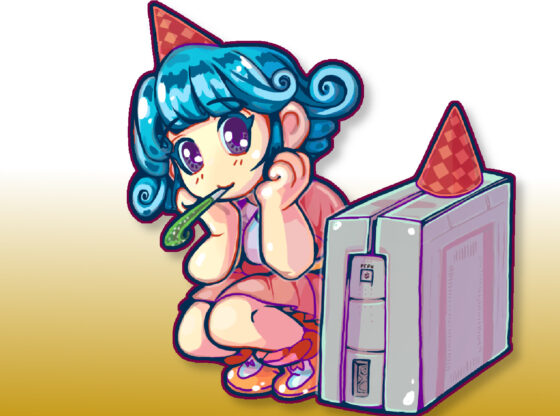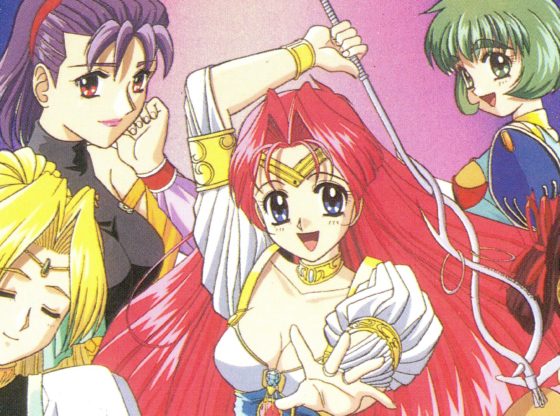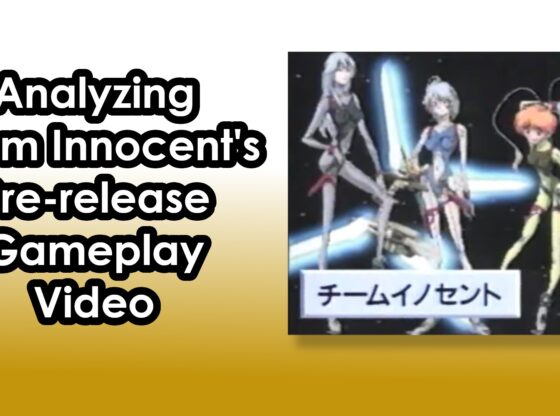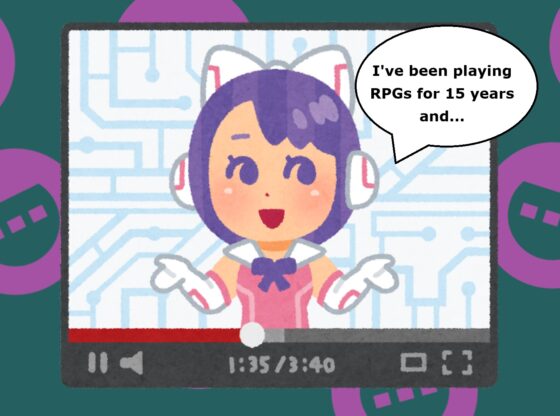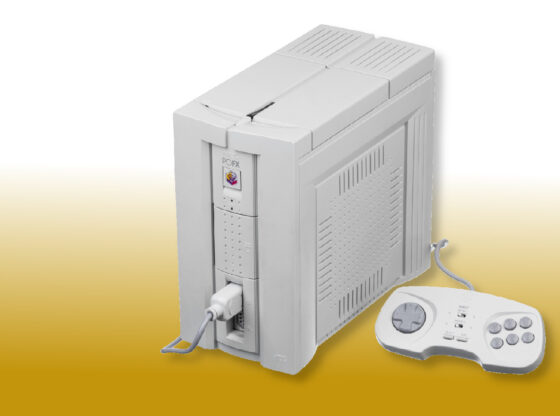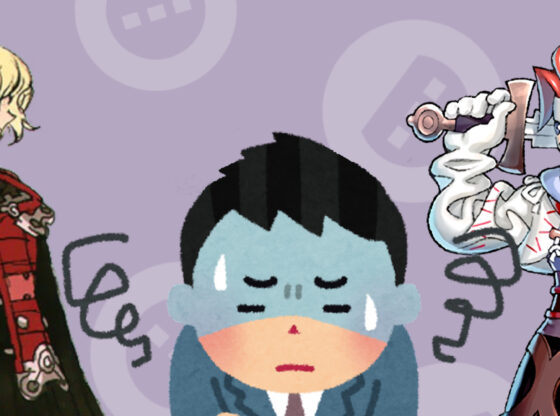In late 2006 the Gamecube and X-box were for the most part dead. The X-box 360 was already on the market and the PlayStation 3 and Nintendo Wii were right around the corner. While the PlayStation 2’s life cycle still continues to this day, the Gamecube has been long gone. The Legend of Zelda Twilight Princess was the Gamecube’s swan song and the final showing of what Nintendo’s little purple lunch box could do.
While it was the last big Nintendo published title on the system, there was another title from Nintendo that launched not long before it. Baten Kaitos Origins is a prequel to the cult classic RPG Baten Kaitos: Eternal Wings and The Lost Ocean. Despite the low sales of the original title, Nintendo localized the sequel in North America. While not the best game in the Gamecube’s small library of RPGs, it definitely is a fun title that tries its best at making a unique and advanced combat system while keeping it as user friendly as possible.
You play as a spirit inside a 15 year old boy named Sagi who recently was accepted into a elite military unit for the empire. A power struggle had been occurring inside the empire and eventually Sagi’s squad was ordered to assassinate the Emperor. Upon arriving they were shocked to find that the emperor was already dead. Soon they are betrayed by their own captain, who gave them orders to assassinate the emperor, who than accuses them as traitors and blames them for the murder of the emperor. While trying to escape from the army’s clutches, Sagi encounters a large monster. Upon defeating this monster Sagi faints and wakes up in a second world. Despite being unable to recognize anyone in this world, everyone knows who he is. Eventually Sagi faints in this new world and wakes up back in his old world at the exact place and time where he fainted. As this quest continues he encounters many of these monsters and repeatedly faints, going between the two worlds. Sagi must figure out how these worlds are connected, why he is being sent to this other world, and try to clear his name in his own world.
Origins takes place twenty years before the original Baten Kaitos. Aside from meeting some of the cast of characters from the original, revisiting locations, and using some of the vocabulary from the original title, the plot is fairly stand alone, someone who has never played the original Baten Kaitos can easily get into the story without much confusion. For those who have played the original, you will get a little bit more insight on what is happening and some of the plot holes from the first title are filled.
As with the first title, Origins’ story constantly goes between being predictable and unpredictable. While the plot twist is not as much of a jaw dropper as the original Baten Kaitos’ was, it definitely is still quite a surprise and will have you questioning everyone’s motives in Origins and the first title. Origins is essentially two stories sewed together, but neither of them really feel like they fully connect to each other most of the time. The story tends to drag on; it never really moves anywhere until the very end of the game. The story is a bit light hearted and takes a fairly humorous tone this time around, but there are still some over dramatic scenes that could have been excluded.
The original Baten Kaitos had a incredibly deep card battle system which was satisfying and deadly when one knew how to use it. The system had a steep learning curve though that ended up pushing away many players. The battle system in Origins has been drastically simplified from the original Baten Kaitos, so much so that the system is almost completely different. Origins switches the old turn based formula out in favor a system much like the Active Time Battle(ATB) system from Final Fantasy games. Due to the length of attacks though, its a bit more slow paced and the action tends to fall behind a bit from your commands. Giving these commands require a lot of concentration. Many times you will find that you aren’t even looking at the battle and have your eyes set only on what commands you are giving. The change in pacing and greater focus on commands give you a disconnected feeling during combat, as if your not even fighting at times and just playing a simple card game.
Quite possibly the most noticeable change is in the spirit number system. In Origins you have general attacks with spirit numbers 1, 2 or 3 and along with those you have 4, 5, 6 and 7 for special attacks. Last but not least there is also cards with the spirit number of 0, these can equip weapons that significantly increases your damage and/or can changes the elements of your attacks. These also can increase your physical and magical defenses. Using these cards in the correct order no longer result in a damage bonus. Instead they determine what attacks you can chain together. Unlike the first game where there were multiple combinations of spirit numbers Origins only allows you to go from 0 to 7. For example if you use a card with a spirit number of 2 then you can no longer use a card with the spirit number of 1 or 0 .
Instead you will have to choose a card with a spirit number of 3 through 7 or end your attack. After these attacks if one of your partners are also ready to attack you can chain the combo with them as long as you have a card with a spirit number of 1 ready for use. These combos can add up to some major damage, but the combo won’t change targets if enemies die mid combo. Instead you will just beat at their dead body till the combo is over, essentially wasting a turn and damage. Elements played a big part in your strategy in the first Baten Kaitos, essentially ruining entire combos if they weren’t managed correctly. But in Origins’ elements play a very minor role. Elements no longer conflict with each other so paying attention to what elements you combine in attacks is no longer a factor in your strategy. Instead it takes a more traditional RPG role with basic strategies of matching the right elements with certain enemies to deal slightly more damage.
Equipping weapons and using general attacks can be done at all times, but the special attacks require MP which are built up by doing actions. Each Special attack has its own set level and require different amounts of MP. Early on it can be easy to build up MP since you are limited to a lower number of special attacks. Later on though when you go up to a level 7 special attack it will be very difficult to pull off a full chain of attacks due to the 5 MP limit to your MP pool. Bursting, which is probably the most satisfying feature of the combat system, allows you to to use a infinite amount of MP. This status effect carries over to other characters allowing you to chain large combos using infinite MP; meaning you can do a 7 hit combo attack on using three characters at once and deal a devastating blow to your foe, which usually ends in the foe’s death.
While the combat is interesting, it’s not as in-depth as the first title. If you had trouble with the first games combat system, the difficulty curve has been severely reduced and it is much easier to learn. That being said it still is a fairly complicated system compared to the typical JRPG. There isn’t a in-game tutorial either which is a bit frustrating, so if you miss this tutorial you will have to guess and figure things out as you go or read the manual. On the bright side the new combat system removes the need to manage a deck for each character. The new system allows you to make a single deck and keep that for all the characters, but if you are not careful the deck can quickly become cluttered.
Origins uses prerendered backgrounds much like the first title, but some times it can be difficult to find entrances and exits in the backgrounds. In some cases just navigating the over world can be difficult because you are not sure where you are able to walk. Your movement speed is faster then a typical RPG. Sagi is able to use his wings to dash, but doing so uses up his stamina. Maintaining his stamina in dungeons is important because if an enemy attacks you when you are out of stamina they will have an advantage in battle. Sagi’s wings remove ladder climbing by allowing him to quickly jump up or down long distances safely. His wings also allow him to jump between large gaps, but these places are preset and can be difficult to find at times. Origins hits and misses with some of its dungeon designs. Some of the puzzles are unique and interesting like in the first title, but many are bland or have been over done ie: light reflecting, water level changing, etc.
As mentioned before, Origins uses prerendered backgrounds. Because Origins takes place in the same world as the original, you will tread on a lot of familiar ground. The art style still holds up fairly well today, but a good amount of the back drops are a bit blurry. Some of the new areas look great including a town thats backgrounds consist entirely of clay models, but on the other hand a lot the new areas are typical RPG fare and are bland. Many of the more interesting areas from the first game don’t make an appearance either, which is a bit disappointing. Character models look decent, but many of the models don’t exactly match up with characters portraits. Most of the NPCs used are recycled character models from the original title. Overall there is not much of a improvement from the first game visually. On the other hand Origins’ voice acting is superior to the original, but you will still hear some voices, mainly that of the children, which will make you want to mute your T.V. Thankfully the opposite can be said for Origins’ sound track; it does come up a bit short compared to the originals, but it is far from terrible. Some familiar songs return and some are remixed. Quite a few new tracks appear as well and their presence is welcome, but they never hit the level of the originals sound track.
As with most RPGs, Baten Kaitos Origins takes around fifty hours to complete if you take your time through the main quest and stop and dabble in some side quests. There’s a Colosseum with preset matches in which you can fight along with some quests where you can get some extra cards for battle. Optional boss battles are available and if you want the real ending you will need to defeat them all before finishing the game. Last and probably the least is New Game + which is simply restarting the game with certain aspects of your past file transferring over. Needless to say, Baten Kaitos Origins probably isn’t a title you will be popping into your Gamecube or Wii much after the credits have rolled.
Origins definitely isn’t the best RPG on the Gamecube, but it is a good one and complements the system’s small RPG library fairly well. If you can get over the less then stellar voice acting and some typical JRPG drama then you should give Baten Kaitos: Origins a shot. Fans of the first Baten Kaitos may not like the new battle system, but those who did not like the original may find a new light in Origins’ battle system. The games graphics consist of a lot of recycled assets which make it feels like a budget title, and indeed you should probably pay a budget price for it. amazon.com is currently selling Baten Kaitos Origins for around $20.00 new so it is definitely worth the price for anyone looking for a JRPG with a twist on the combat system.







